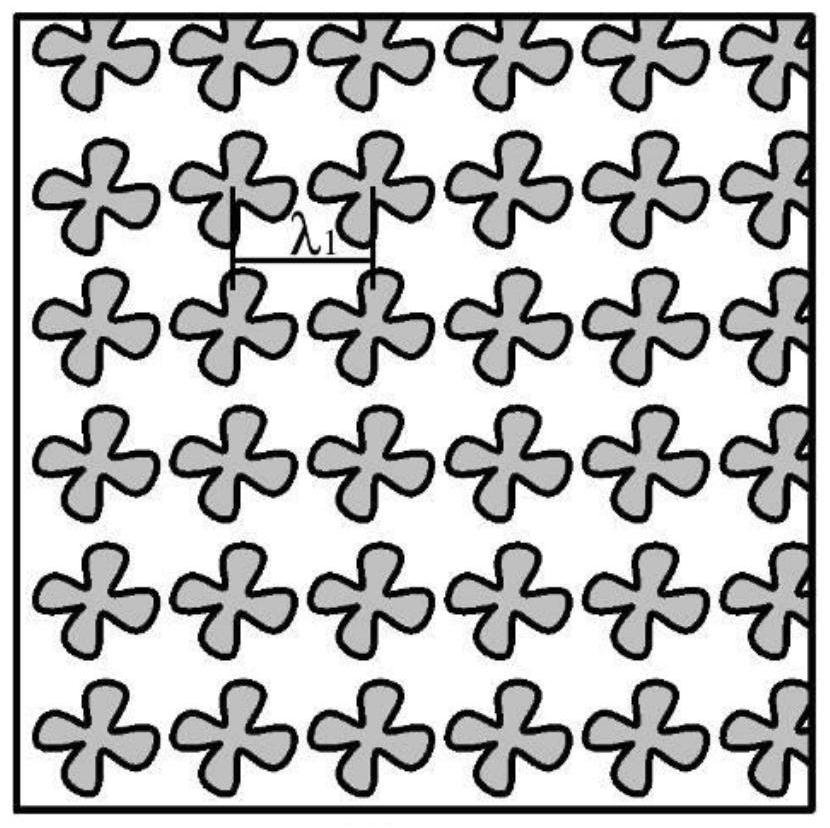Treatment method of high-temperature alloy EBSD test sample
A high-temperature alloy and processing method technology, which is applied in the field of processing high-temperature alloy EBSD test samples, can solve problems such as long cycle time, difficult EBSD test sample preparation, and complicated procedures, so as to improve efficiency, save repetitive work, and improve accuracy and reliability effects
- Summary
- Abstract
- Description
- Claims
- Application Information
AI Technical Summary
Problems solved by technology
Method used
Image
Examples
Embodiment 1
[0033] This embodiment includes the following steps:
[0034] Step 1. Mechanical grinding: The first generation single crystal superalloy DD403 sample is subjected to rough grinding, fine grinding and mechanical polishing in sequence. The first generation single crystal superalloy DD403 is composed of the following components by mass: Cr 9.5% , Co5.0%, Mo 3.8%, W 5.2%, Al 5.9%, Ti 2.1%, the balance is Ni, the specific process is as follows:
[0035] Step 101, adopt 600 # The surface of the first-generation single-crystal superalloy DD403 sample is roughly ground with sandpaper until the surface of the first-generation single-crystal superalloy DD403 sample is smooth and free of dents;
[0036] Step 102, adopt 800 in turn # , 1000 # , 1500 # , 1800 # , 2000 # The first-generation single crystal superalloy DD403 sample after rough grinding in step 101 is finely ground with sandpaper until there are no visible scratches;
[0037] Step 103: Assemble the navy cloth polishing...
Embodiment 2
[0042] This embodiment includes the following steps:
[0043] Step 1. Mechanical grinding: The second-generation single crystal superalloy DD6 sample is subjected to rough grinding, fine grinding and mechanical polishing in sequence. The second-generation single crystal superalloy DD6 is composed of the following components in mass percentage: Cr 4.3% , Co 9.0%, Mo 2.0%, W 8.0%, Ta 7.5%, Re 2.0%, Nb 0.5%, Al 5.6%, Hf 0.1%, C 0.006%, the balance is Ni, the specific process is as follows:
[0044] Step 101, use 800 # The surface of the second-generation single crystal superalloy DD6 sample is roughly polished with sandpaper until the surface of the second-generation single crystal superalloy DD6 sample is smooth and free of dents;
[0045] Step 102, adopt 1000 in turn # , 1500 # , 1800 # , 2000 # , 2500 # The second-generation single crystal superalloy DD6 sample after rough grinding in step 101 is finely ground with sandpaper until there are no visible scratches;
[0046...
Embodiment 3
[0051] This embodiment includes the following steps:
[0052] Step 1. Mechanical grinding: Rough grinding, fine grinding and mechanical polishing are performed on the third-generation single crystal superalloy DD33 sample in turn. The third-generation single crystal superalloy DD33 sample is composed of the following components in mass percentage: Cr 2.5%, Co9.0%, Mo 1.5%, W 6.0%, Ta 8.0%, Re 4.0%, Al 6.0%, Ti 0.2%, C 0.02%, Hf0.001%, the balance is Ni, the specific process is as follows:
[0053] Step 101, adopt 1000 # The surface of the third-generation single crystal superalloy DD33 sample is roughly ground with sandpaper until the surface of the third-generation single crystal superalloy DD33 sample is smooth and free of pits;
[0054] Step 102, adopt 1000 in turn # , 1500 # , 1800 # , 2000 # The third-generation single crystal superalloy DD33 sample after rough grinding in step 101 is finely ground with sandpaper until there are no visible scratches;
[0055] Step 1...
PUM
| Property | Measurement | Unit |
|---|---|---|
| angle | aaaaa | aaaaa |
Abstract
Description
Claims
Application Information
 Login to View More
Login to View More - R&D
- Intellectual Property
- Life Sciences
- Materials
- Tech Scout
- Unparalleled Data Quality
- Higher Quality Content
- 60% Fewer Hallucinations
Browse by: Latest US Patents, China's latest patents, Technical Efficacy Thesaurus, Application Domain, Technology Topic, Popular Technical Reports.
© 2025 PatSnap. All rights reserved.Legal|Privacy policy|Modern Slavery Act Transparency Statement|Sitemap|About US| Contact US: help@patsnap.com


